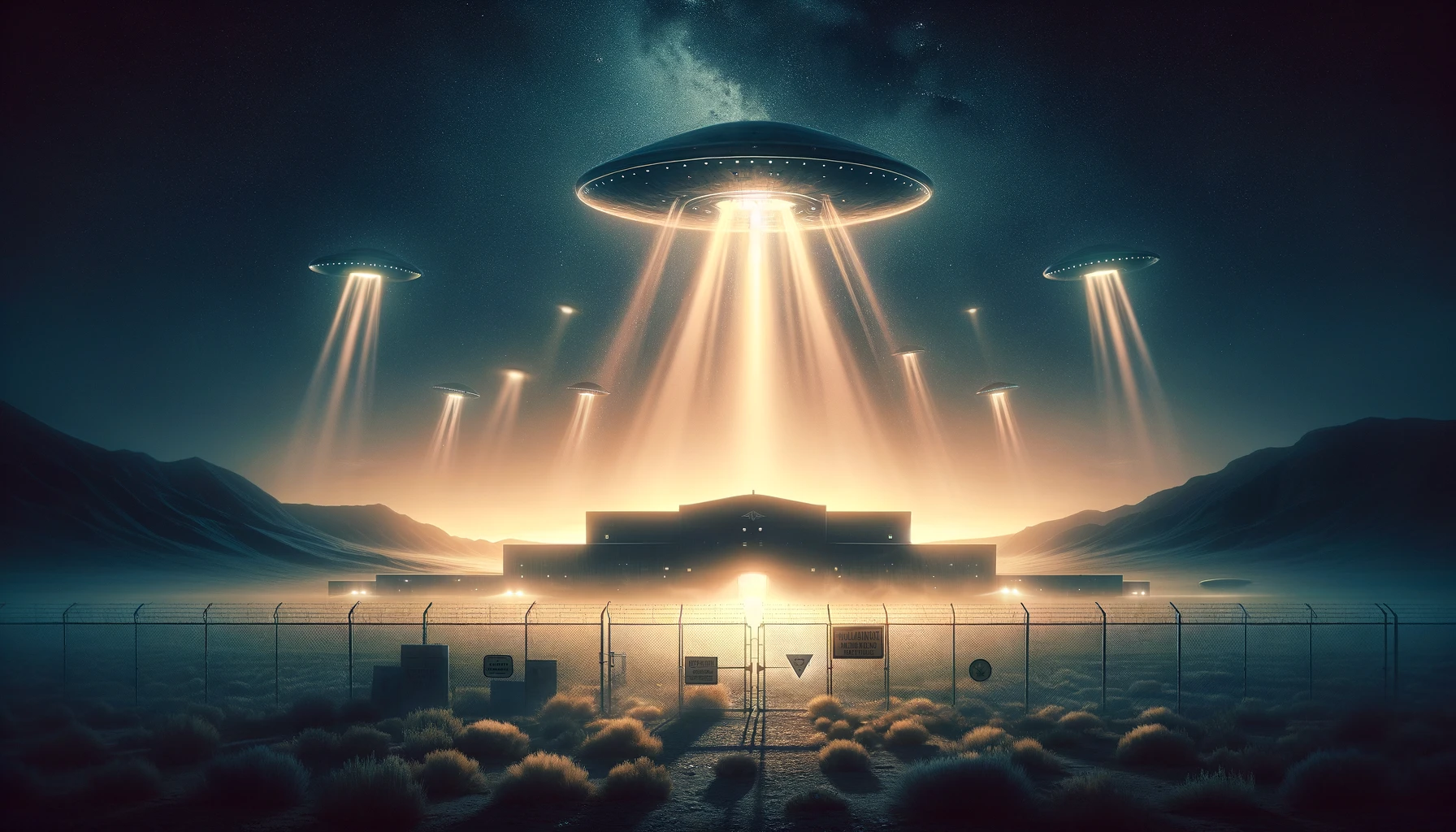Nestled within the desolate reaches of the Nevada desert lies Area 51, a name that evokes images of secretive government operations, cutting-edge military technology, and, most famously, aliens. This highly classified United States Air Force (USAF) facility, officially known as Homey Airport (KXTA) or Groom Lake, after the salt flat it sits on, has been the epicenter of countless conspiracy theories and speculation about extraterrestrial life and UFOs. But what is the truth behind Area 51, and why has it become synonymous with alien lore?
The Origins of Area 51
Established in 1955 as a test site for the U-2 spy plane, Area 51’s primary purpose was to develop and test experimental aircraft and weapons systems away from public view. Its remote location and the airspace above it, restricted from commercial and general aviation, made it an ideal setting for such secretive activities. Over the decades, the site has been linked to various advanced projects, including the A-12 (precursor to the SR-71 Blackbird), F-117 Nighthawk stealth fighter, and possibly more that remain classified.
The Alien Connection
The extraterrestrial mythology surrounding Area 51 can be traced back to the U.S. government’s secrecy about the facility’s purpose and activities. This veil of mystery provided fertile ground for theories about the storage of alien spacecraft and technology recovered from UFO crash sites, most notably the alleged 1947 Roswell UFO incident in New Mexico. Stories and rumors have proliferated, suggesting that the site houses extraterrestrial beings, either living or deceased, and that the government is reverse-engineering alien technology.
The Impact of Popular Culture
Popular culture has played a significant role in embedding Area 51 and its supposed alien secrets in the public consciousness. Films, television shows, and books have portrayed the site as the central hub of government interaction with extraterrestrial life. This portrayal has fueled public interest and speculation, leading to a blend of myth and reality that blurs the lines between fact and fiction.
The Search for Truth
Attempts to penetrate the shroud of secrecy surrounding Area 51 have met with limited success. The U.S. government’s acknowledgment of the facility’s existence came only in 2013, in response to a Freedom of Information Act request, without divulging details about its operations or missions. Enthusiasts and conspiracy theorists continue to seek evidence of alien activity, though their efforts are hampered by the site’s high security and the government’s tight-lipped stance on its activities.

Area 51 remains one of the most intriguing and mysterious places in the world, a symbol of the human quest for knowledge and our fascination with the unknown. Whether it harbors alien secrets or is simply a testament to human ingenuity and secrecy, its legend continues to captivate and inspire. As we look to the stars and ponder what lies beyond, Area 51 serves as a reminder of the mysteries that still await discovery on our own planet and beyond.
